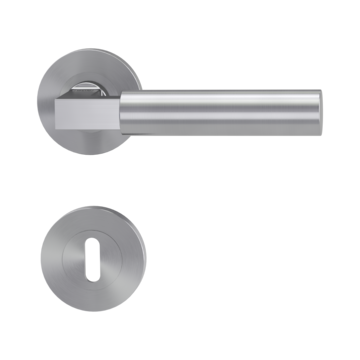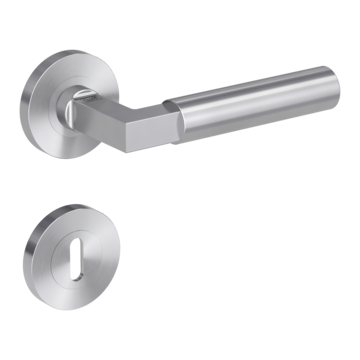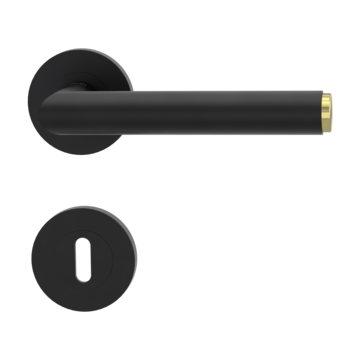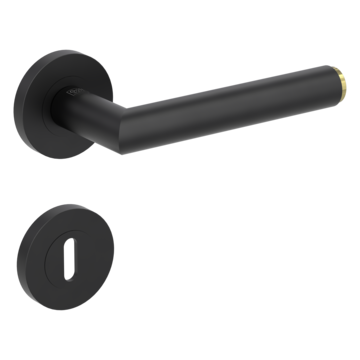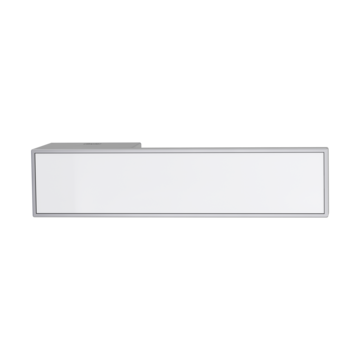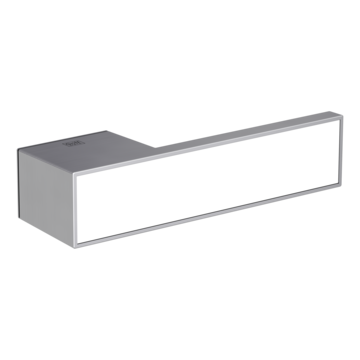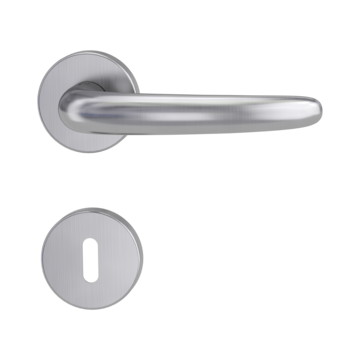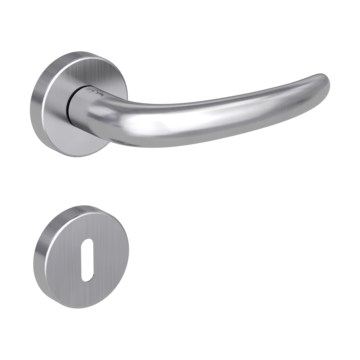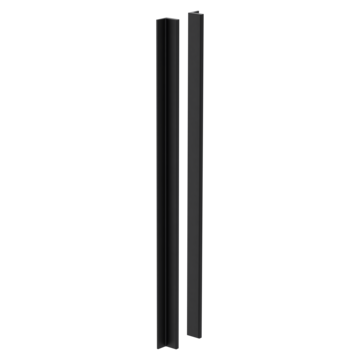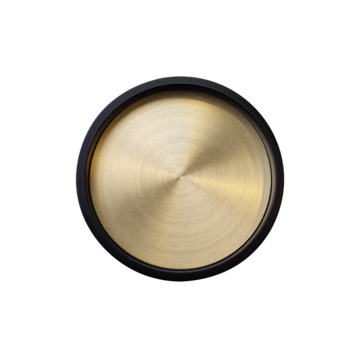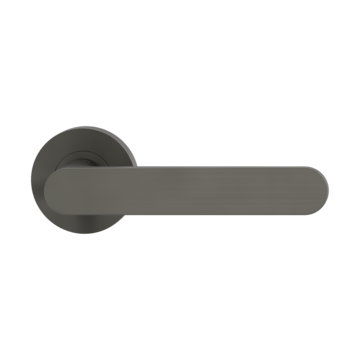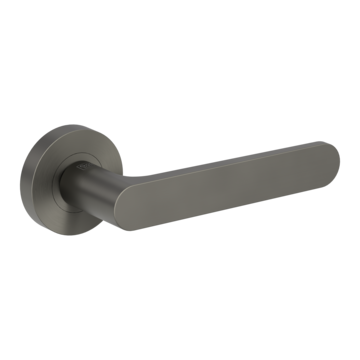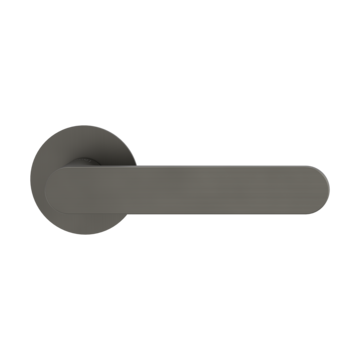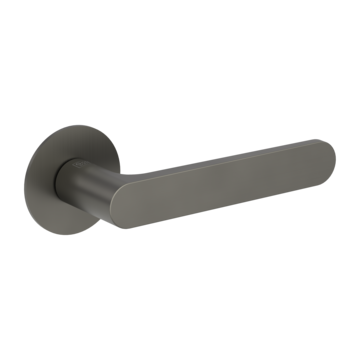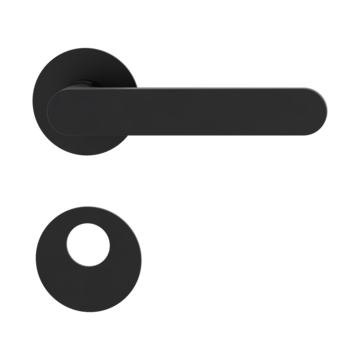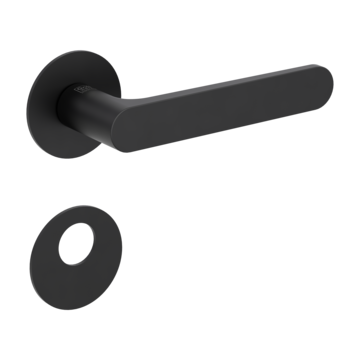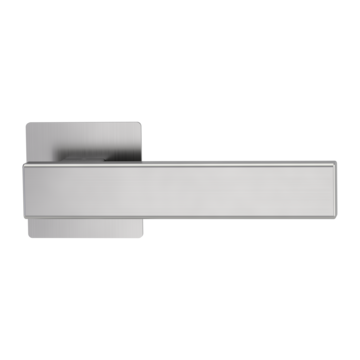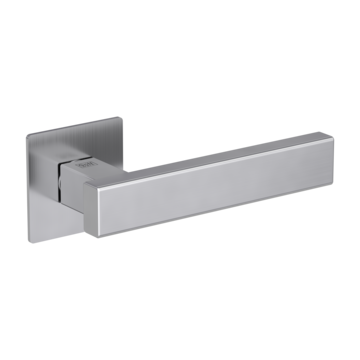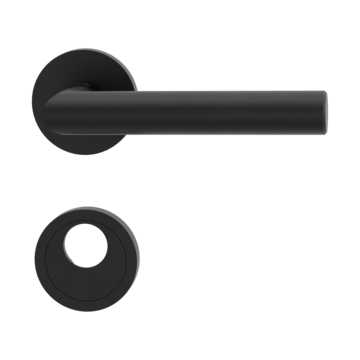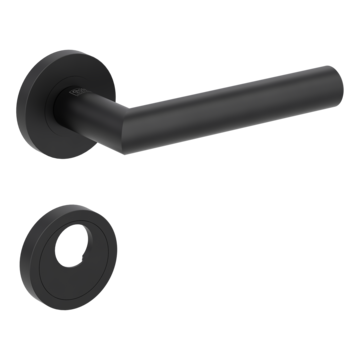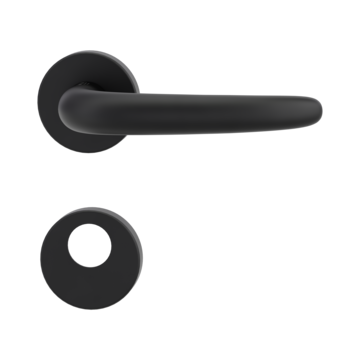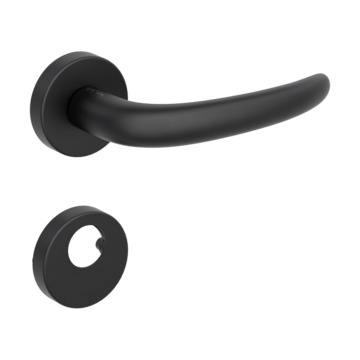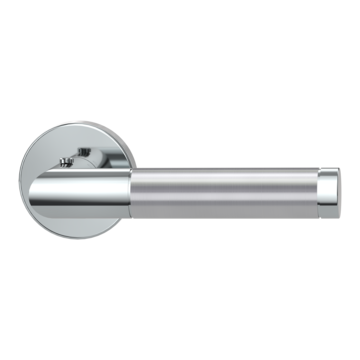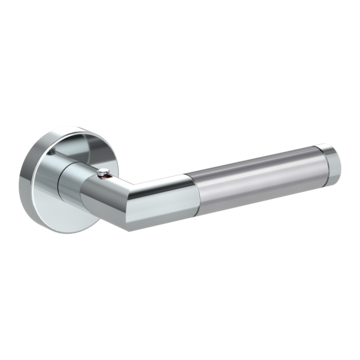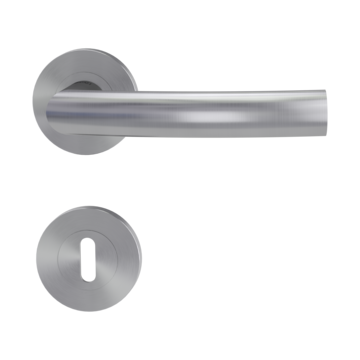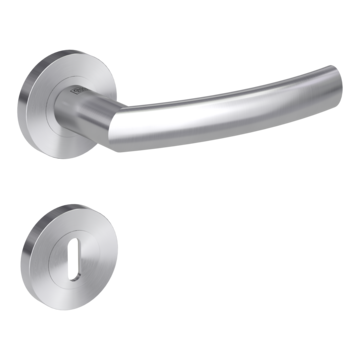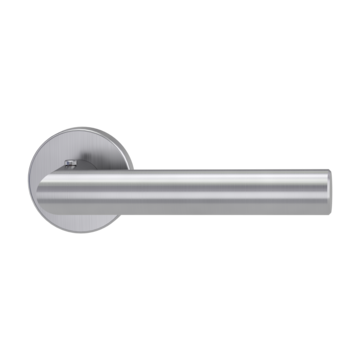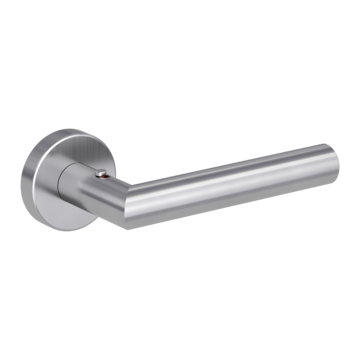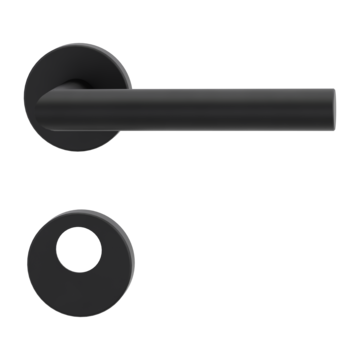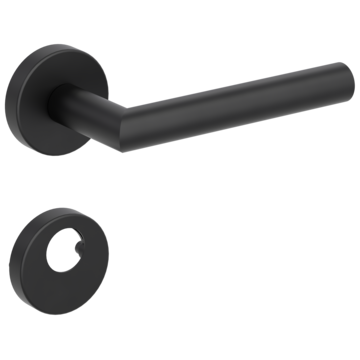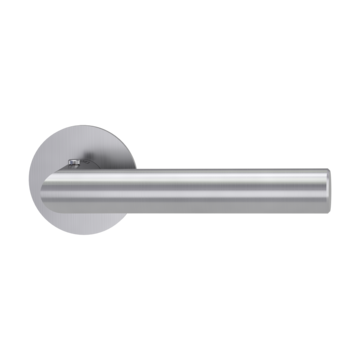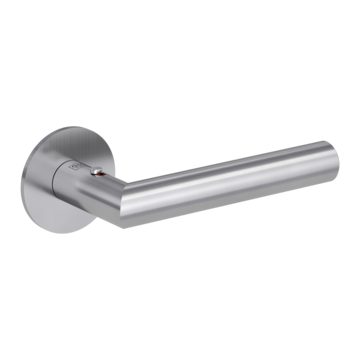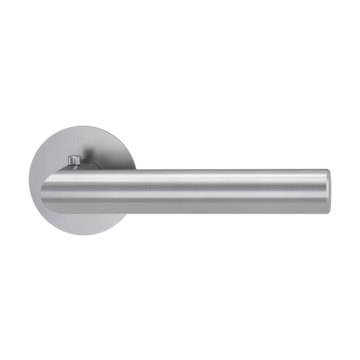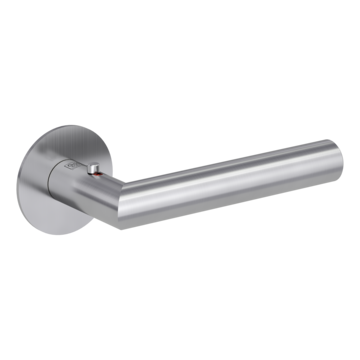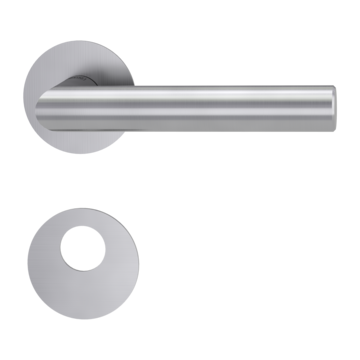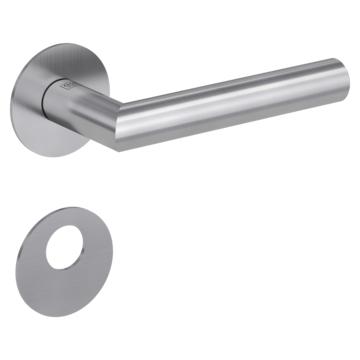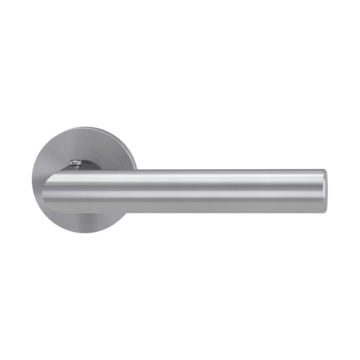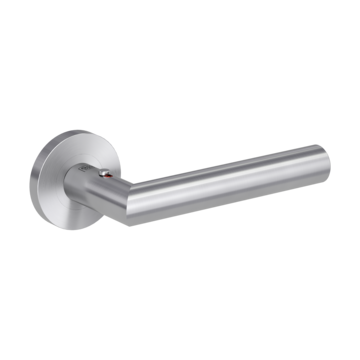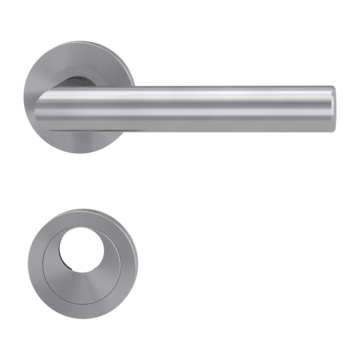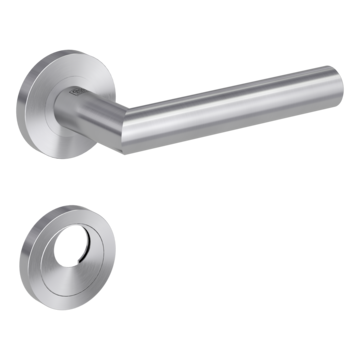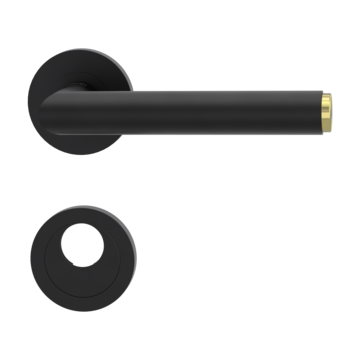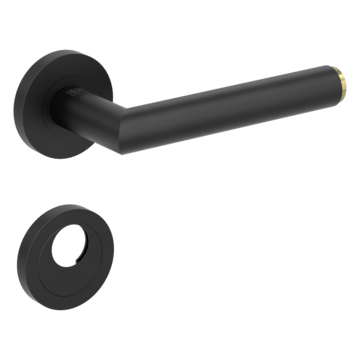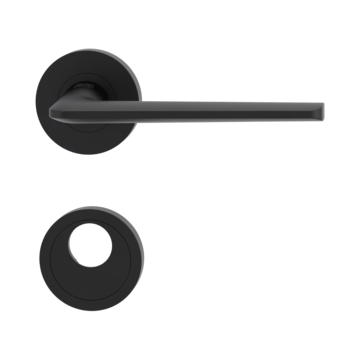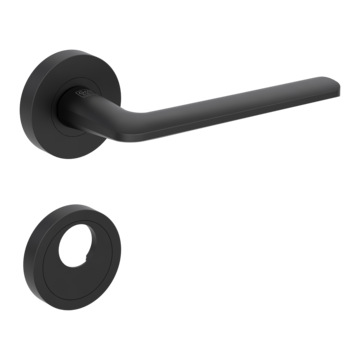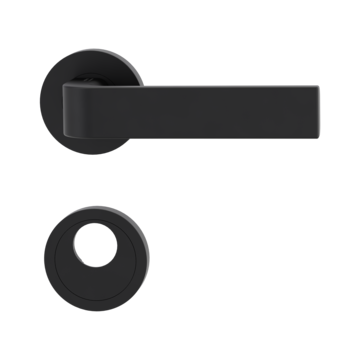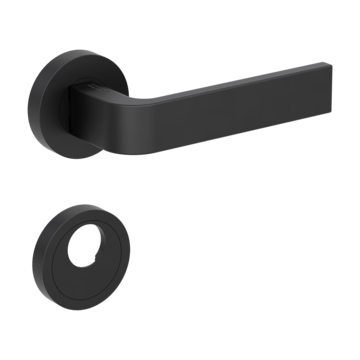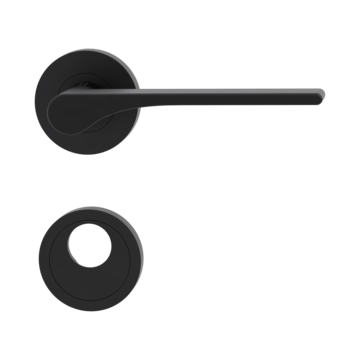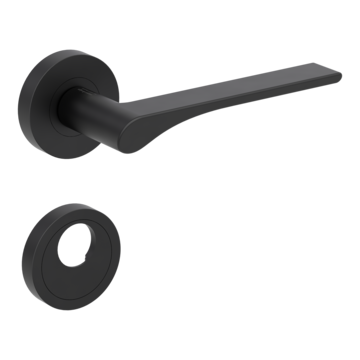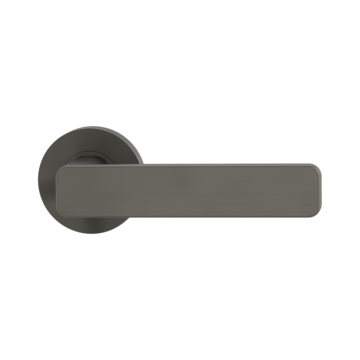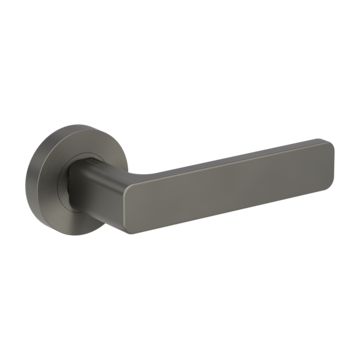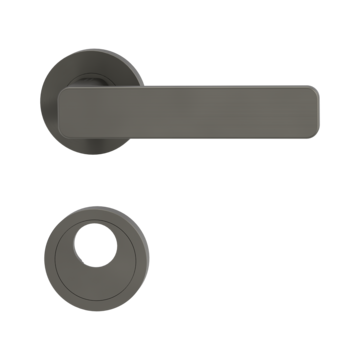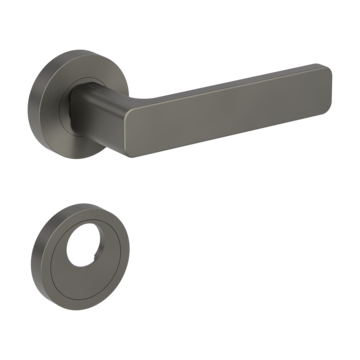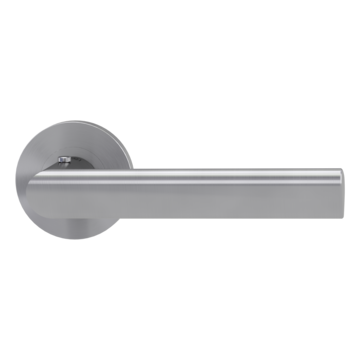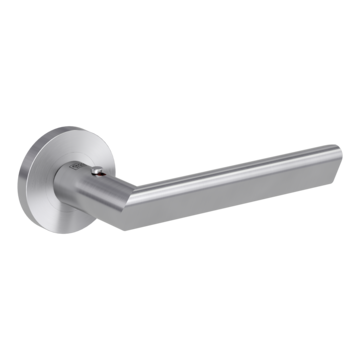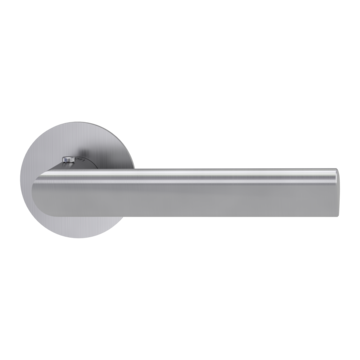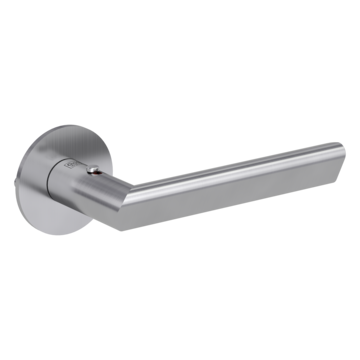Living in Bauhaus style
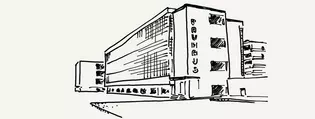
100 Years Bauhaus
The State Bauhaus (1919-1933) was probably the most renowned educational institution for design, art and architecture of the last century. It was founded in Weimar in 1919 by Walter Gropius. It was not until 1925 that it moved to Dessau. In 2019, it celebrates its 100th anniversary.
What is the Bauhaus style?
There is a lot of discussion about a typical Bauhaus style, although the term did not exist in this form at the national Bauhaus. No concrete style guidelines were deliberately dictated. Rather, they strove for an open culture of renewal. In particular, the products were to meet the requirements of the new modernity. This included a high degree of functionality but also industrial producibility in large quantities. For the typical Bauhaus handle by Walter Gropius, for example, semi-finished products such as drawn tubes were used. If one were to define the canon of forms known today as the Bauhaus style by a few criteria, these would be: maximum reduction to basic geometric forms and clear, straightforward objectivity. Both aspects make up the timeless but also sophisticated aesthetics of this style, which has lost none of its topicality.
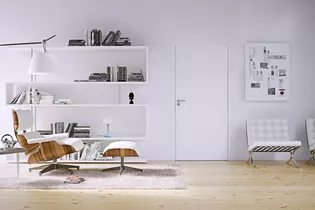
DESIGN - CLASSIC BAUHAUS STYLE
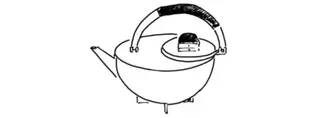
TEAPOT BY MARIANNE BRANDT
The hemispherical silver teapot designed by Marianne Brand has become almost synonymous with Bauhaus design. One copy of the MTBK 24 teapot was auctioned off in 2007 for $361,000, making it the most expensive Bauhaus object of all time. The Norwegian metal designer was also the only woman to graduate from the metal workshop of the state Bauhaus, against all odds.
Door handles in Bauhaus Style
The classic
The Bauhaus handle par excellence is the door handle designed by Walter Gropius during his time as director at the Bauhaus, which he also used for the Fagus works. Its characteristic feature is the combination of the cylindrical handle with the mitered square bar.
Because of its simplicity, the handle was denied "art protection" as early as 1933 and the shape was subsequently offered by numerous manufacturers. We carry METRICO, a handle based on the later Dessau model. It differs from the earlier Weimar model by a clearly separated cylinder.
Bauhaus style: SIMPLE BASIC BODIES
Whether cuboid, sphere or square, geometric basic bodies formed the typical canon of forms at the Bauhaus. For door handle SQUARE we have connected two blocks of solid (!) stainless steel. The rosette is held with two visible screws, just like it was common at the time of the Bauhaus.
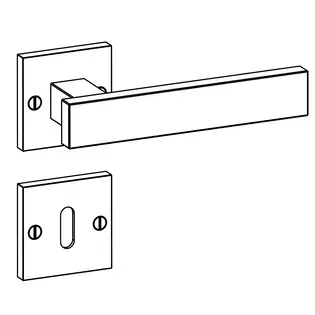
Bauhaus style colored metals
Copper and brass were frequently used materials in the metal workshops of the Bauhaus. These warm metal tones are currently finding their way back into interior design. Time for us to take up this inspiration: LUCIA SELECT is available with a solid brass or copper accent.
An Ode to the right angle
Door handle FRAME developed by Prof. Thomas Gerlach has been reduced to the maximum and even dispenses with rosettes. The form is absolutely clear and literally an ode to the right angle. Thus, this door handle also honors the design approaches coined at the Bauhaus.
IN CONTRASTING BLACK
When you enter the Dessau building, you notice the black-painted railings, wall ends and stair treads. They form a clear contrast to the generous white surfaces of the walls and correspond with the black frames of the facade windows. Black hardware can be used to create a bit of a Bauhaus atmosphere in any setting.
By the way, our black is called "graphite black" and is a very soft and matte shade of black. In our assortment you can find door handles for wooden doors but also lock cases for glass revolving doors like PURISTO and even handle bars for sliding door systems like LUCIA GST designed by Relvao Kellermann design studio.
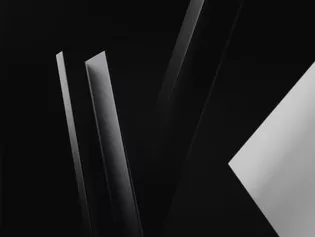
Matching products:
MAX BILL AT THE BAUHAUS
Max Bill also attended the basic training at the Bauhaus. In 1927, at the age of only 18, his decision was made to study at the Bauhaus. He stayed for a total of only three semesters. Already in 1928 he went back to Zurich. After the Second World War, Bill became co-founder of the Ulm School of Design (Ulmer HfG), which, like the Bauhaus, is considered one of the most important design schools internationally.
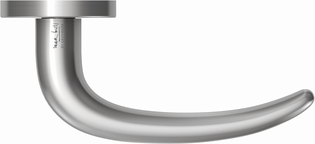
MAX BILL AT THE ULM HFG
During his time at the Ulm School of Design (Ulmer HfG), Max Bill developed a door handle that we have re-edited in collaboration with the max, binia + jakob bill Foundation. It strictly adheres to the historical originals. By the way, the licensed reedition of the Ulm handle is available exclusively through us and clearly distinguishes itself from plagiarism.
GLASS DOORS IN BAUHAUS STYLE
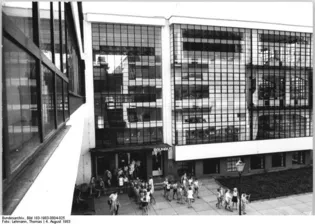
THE "GLASS BAUHAUS"
When one thinks of the Dessau Bauhaus, the workshop building with its imposing glass facade immediately comes to mind. It was structured by a fine black grid and coined the term "glass Bauhaus". Walter Gropius was thus continuing an idea that he had already realized at the Fagus Works before World War 1.
Deciding in favor of a curtain wall glass façade at a time when construction possibilities were still limited must certainly be seen as a statement. The building itself was intended as a kind of modernist showcase. From a functional point of view, the glass surface served to illuminate the workshops. Its symbolic meaning is interpreted in different ways. It is said, for example, that the transparency was intended to create a kind of shop window. The work inside the Bauhaus was to be perceptible to the outside world and to be exchanged.
LOFTCHARACTER
Glass as a building material stands for light and transparency. Generous façade windows have become an indispensable part of current architecture. Glass doors are also gaining ground in interiors. A new feature is the combination with black hardware elements. They give glass door systems a particularly "Bauhaus" look, such as PLANEO LOFT.
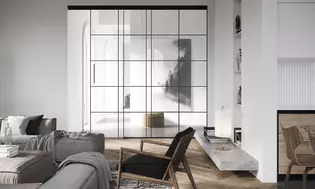
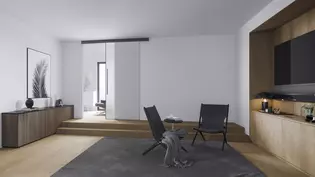
BLACK FRAMED: PLANEO AIR
With PLANEO AIR we introduced our first glass door system with a fine black frame. A filigree aluminum profile outlines the glass surface and also serves as edge protection. PLANEO AIR was awarded the red Dot Award and the German Design Award 2018.
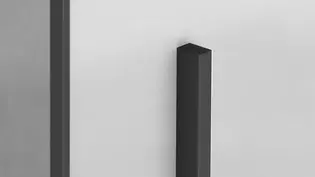
LESS IS MORE
We revolutionized the design of handle bars by developing new fastening techniques. We rely on high-performance adhesive joints. A small connecting surface is all that is needed. As a result, PLANEO GS handle bars could be reduced to a narrow cuboid shape. Smooth-running rail systems, as with PLANEO AIR, make it particularly convenient to use.

PLANEO AIR - HONORED WITH THE RED DOT AWARD 2017
The high design quality of the sliding door system Planeo Air was recognized with the prestigious Red Dot Award in 2017.
Glass door system PLANEO AIR was designed by GRIFFWERK in the Blaustein design department. A filigree frame profile of only 6 mm width outlines the glass surface of the glass door system. The matte black surface "graphite black" stands in exciting contrast to the radiant white glass surface in white glass PURE WHITE by GRIFFWERK. In addition to its aesthetic value, the profile provides additional protection for the glass edge. The minimalist handle strip, also black, radiates lightness - nothing more than a fine, graphic line fulfills all functions. The concealed track of the sliding door system holds technical comfort, for example, a soft closing mechanism.
PLANEO AIR - GERMAN DESIGN AWARD WINNER
In 2019 followed the nomination and award of the glass door system PLANEO AIR with the German Design Award 2019.
The German Design Award is conferred by the German Design Council, which has been representing the design scene in Germany for more than 65 years and confers one of the most prestigious awards for high design quality with the German Design Award.
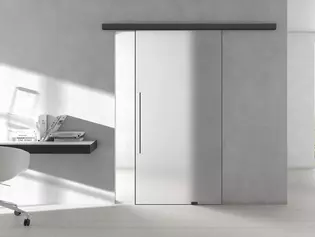
With this award, the German Design Council honors "innovative products, their manufacturers and designers that are groundbreaking in the German and international design landscape," according to the organizers.
The nomination for the German Design Award alone may be understood as a special distinction, as the German Design Council reserves the right to select the companies and products itself.
The international jury justifies the decision to honor PLANEO AIR with the award as follows: "The filigree frame profile keeps the white glass panel almost invisible, making it seem almost immaterial. In addition, it glides in its concealed track almost as if by itself, which reinforces the impression of lightness and floating. A great, poetic design."
Matching products:
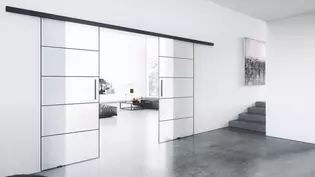
IN THE GRID: PLANEO LOFT
With PLANEO LOFT, fine aluminum pilaster strips lie on top of the glass surface. They can be set to suit your taste. Narrow or open grids are possible. Of course, this glass door system is available in single and double-leaf versions and in special sizes.
FUNCTIONALISTIC: PURISTO S
We are sure that the product designers at Bauhaus would have been delighted with the PURISTO S lock case. The locking function is conveniently located within thumb's reach. It is a new design developed in Blaustein and is fully in line with the functionalism propagated at the Ulm HfG and the Bauhaus.
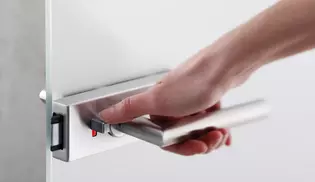
FIND YOUR SPECIALIZED DEALER
The GRIFFWERK brand is available through specialized dealers. You can find dealers near you via our dealer search.
HOUSES IN BAUHAUS STYLE
Building in the "Bauhaus" style enjoys great popularity. But what does it mean? If you are looking for "real" Bauhaus houses, you will find them in Dessau. There, the Meisterhaus housing estate was built in the immediate vicinity of the teaching buildings. It consisted of three identically constructed semi-detached houses for the professors and a single house, the directors' house. Not all of the buildings have survived the test of time. The director's house and the Moholy-Nagy house fell victim to the war. All other buildings suffered greatly from later use and numerous, structural changes. It was not until 1996 that the estate was declared a UNESCO World Heritage Site.
TYPICAL BAUHAUS...
The most obvious features are the interlocking cubic bodies. They characterize the exterior appearance of the buildings and hint at the interior spatial arrangement. Projections were used as additional terraces. The large-scale facade windows with the typical black grid already used on the workshop building are also found again. They extend over several stories and illuminated the stairways as well as the studios facing the street. Each master had a personal work studio at his disposal. Living and working were thus inseparably linked at the Bauhaus.
THIS IS HOW YOU BUILD IN THE BAUHAUS STYLE:
- rhythmically structured facades
- nested cubes
- right angles
- balconies around corners
- walled terrace plateaus
- bright white surfaces
- black window frames/bars
- large windows as curtain walls
- projecting building elements
- asymmetrically arranged windows
SEMI-DETACHED HOUSES THAT DO NOT LOOK LIKE THIS
None of the three semi-detached houses reveals that they are in fact two identical halves of a house. The trick: the floor plans were first mirrored and then rotated by 90 degrees. In combination with the interlocking facade appearance, all the buildings now appear very heterogeneous. No mere linear arrangement or obvious symmetry reveals the modular character, and yet the Masters' Houses are emblematic of the idea of architect Walter Gropius, who was interested in a "construction kit on a large scale" that would make modern, functional building possible.
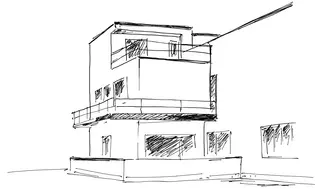
FEININGER/MOHOLY-NAGY HOUSE
Walter Gropius brought the New York-born painter Lyonel Feininger to the State Bauhaus as early as 1919. He was master of forms at the print shop until 1925 and lived in a semi-detached house in Dessau with Laszlo Moholy-Nagy, who was head of the metal workshop from 1923-25. His half of the house was destroyed in the war and reconstructed in 2012-2014 according to a design by the Berlin office Bruno-Fioretti-Marquez.
HOUSE MUCHE/SCHLEMMER
The painter and sculptor Oskar Schlemmer taught mural painting at the Bauhaus and later ran the stage workshop. He shared a duplex with Georg Muche, who ran the weaving workshop until 1925. The Muche/Schlemmer house has been largely preserved and was restored in 2001.
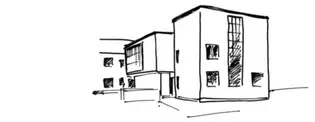
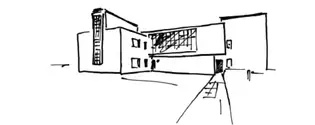
HOUSE KANDINSKY/KLEE
Today this building gives visitors the opportunity to get an insight into the private life of the two painters Paul Klee and Wassiliy Kandinsky. The very individually decorated interiors have been largely restored. And things are certainly more colorful. The varied color scheme of the walls clearly deviates from the original plans of architect Walter Gropius. The house was only reconstructed in 2019.
GROPIUS HOUSE
The only detached house in the development is the Direktorenhaus. Walter Gropius lived here with his family until 1928, and his successors Hannes Mayer and Mies van der Rohe also settled here. It fell victim to a bombing raid during the Second World War.
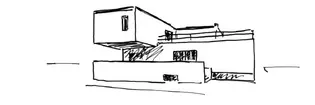
Like the Moholy-Nagy House, which was also destroyed, it was recently rebuilt according to a design by the Berlin office of Bruno-Fioretti-Marquez. Their concept of "blurred memory" avoided a mere reconstruction. Today's buildings do not disguise the loss of the original buildings and yet give them a new presence.
A TRIBUTE TO BAUHAUS
The design of the PLANEO LOFT glass door system was inspired by the characteristic façade windows of the Dessau Bauhaus. PLANEO LOFT, however, is a new interpretation in its own right. Instead of the typical workshop character, we chose a much more minimalist, refined design language that can be integrated into contemporary interior design in a more versatile way.
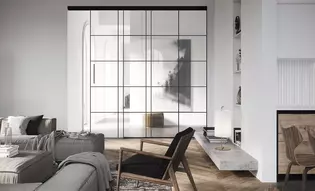
The most frequently asked questions about Bauhaus style
What questions are most often asked about Bauhaus? We found out using software that analyses which questions people ask voice assistants from Apple, Google and the like. We answer five of them here:
1. What is characteristic of the Bauhaus style?
Living in the Bauhaus style means reduced and unadorned living. Functionality and design are combined in the Bauhaus style. Symmetrical shapes and simple, clear architecture are the hallmarks of the Bauhaus style.
2. Which doors match the Bauhaus style?
Doors made of steel or concrete go well with the rustic Bauhaus style. Room separation: Living concepts with open spaces are best equipped with sliding doors made of glass and thus remain flooded with light.
3. Which door handles suit the Bauhaus style?
Door handles with clear lines suit the Bauhaus style. A silver door handle goes just as well with the Bauhaus style as a door handle in black with golden or copper-coloured elements. Clear lines predominate, which is why a door handle and rose tend to be angular. For even more reduced design, a door rose can even be dispensed with here and only a door handle can be fitted.
4. Which materials suit the Bauhaus style?
Materials from industry: concrete, glass and steel are typical materials in the Bauhaus style.
5. Which colours suit the Bauhaus style?
Besides black and white, the three primary colours red, yellow and blue belong to the colour palette of the Bauhaus style.
